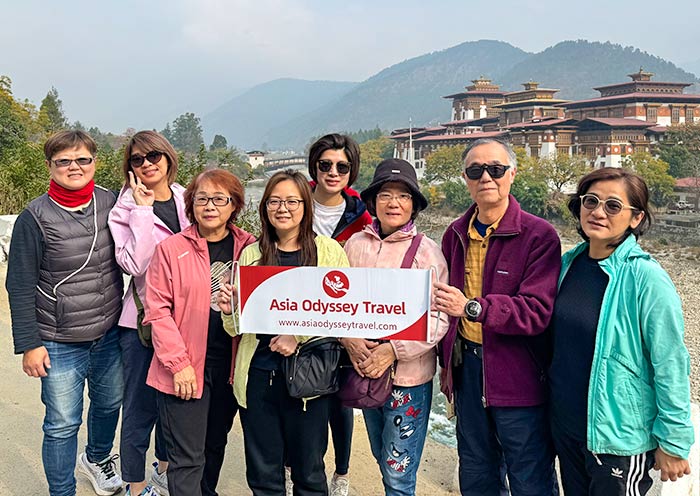Paro Weather Characteristics Overview
Paro, a valley town in the western part of Bhutan, has a temperate climate with four distinct seasons. Paro's altitude of about 2,200 meters (7,200 feet) contributes to cooler temperatures compared to lower-lying areas in Bhutan.
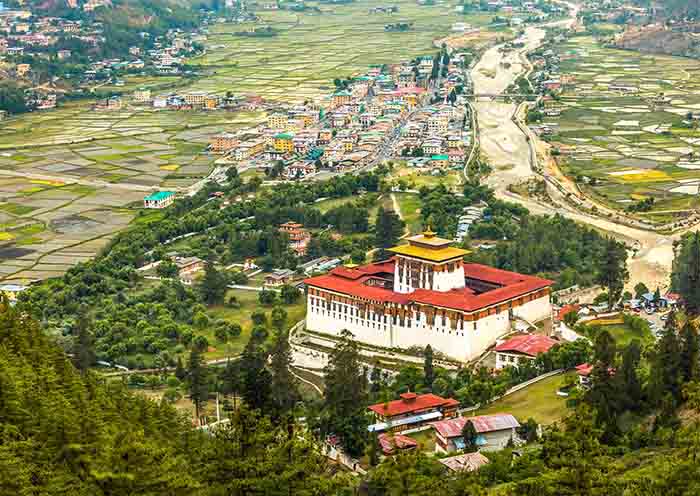

Temperature:
- Winter (December to February): Average highs of 9°C (48°F) to 15°C (59°F) and lows of -5°C (23°F) to 5°C (41°F).
- Summer (June to August): Average highs of 20°C (68°F) to 25°C (77°F) and lows of 11°C (52°F) to 15°C (59°F).
Rainfall:
- Monsoon season from June to September, with July and August being the wettest months.
- Winter and spring experience significantly less rainfall compared to summer.
Sunshine:
- Paro receives a good amount of sunshine throughout the year.
- Winter and spring have the highest number of sunny days.
- Some cloud cover can be expected in summer due to monsoon rains.
Wind:
- Summer months may have breezy conditions due to monsoon winds, especially after rainfall.
- Winter generally experiences calmer winds.
Seasons:
- Winter (December to February): Cold and dry with occasional snowfall in higher elevations.
- Spring (March to May): Milder temperatures, blooming flowers, and vibrant landscapes.
- Summer (June to August): Warm, humid, and characterized by monsoon rains.
- Autumn (September to November): Pleasant temperatures, clear skies, and colorful foliage.

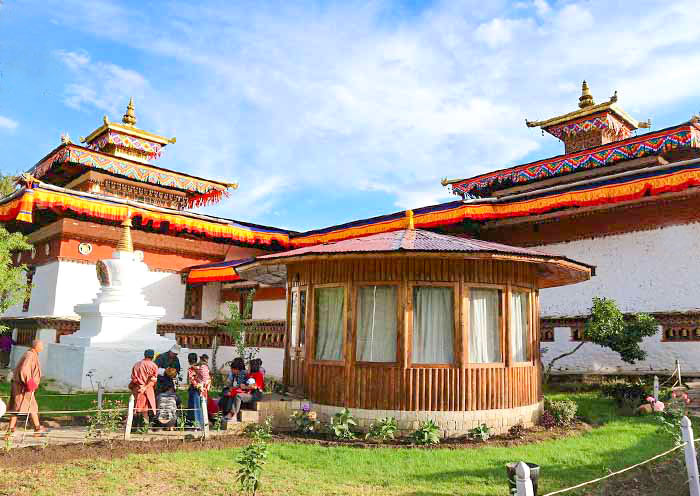
Paro Weather in Spring (Mar to May) - Best Season
Spring in Paro is characterized by warming temperatures, infrequent rains, an abundance of sunny days, and clear views of the Himalayan peaks, making it an inviting time for travelers seeking both cultural immersion and outdoor adventures.
Weather and Climate of Paro in Spring: Lovely and Pleasant
Temperature: The temperatures in spring gradually rise, beginning from cool averages of around 8°C (46°F) in early March and reaching up to 20°C (68°F) by the end of May. Nights can still be chilly, especially in early spring, so warm layers are advisable.
Precipitation: Spring is relatively dry compared to the monsoon season of summer. However, occasional rainfall can occur, bringing freshness to the air and aiding the blooming of flowers. The Paro Valley comes alive with vibrant wildflowers and lush greenery during these months.
Sky and Sunlight: The skies are often clear, with longer daylight hours as the season progresses, offering ample opportunity to explore the outdoor beauty of Paro. The clear skies also provide stunning views of the snow-capped Himalayas that surround the valley.
Things to do in Paro in Spring: Enjoy the Romantic Kingdom
Attend Paro Tshechu: One of the most colorful and significant events in Bhutan is the Paro Tshechu, held in the spring. This religious festival features masked dances, traditional music, and elaborate costumes, drawing both locals and tourists alike.
Hiking and Trekking: With the snow melting and wildflowers blooming, trails like the famous Tiger's Nest Monastery (Taktsang) become accessible and offer breathtaking views. Other treks such as the Bumdra Trek also become popular.
Sightseeing: Visit historical sites such as Rinpung Dzong, the National Museum of Bhutan, and Kyichu Lhakhang. The clear weather enhances the experience with unobstructed views of these iconic structures.
Explore Local Life: Engage with the locals and learn about their way of life. Visit a traditional farmhouse and experience Bhutanese hospitality firsthand.


Paro Weather in Summer (Jun to Aug) - Monsoon Season
Summer in Paro is dominated by the monsoon season. This period brings a mix of warmth, moisture, and lush landscapes.
Weather and Climate of Paro in Summer: Wet and Hot
Temperature: Average temperatures during summer range from 15°C (59°F) in the evenings to 30°C (86°F) during the day, creating a warm environment that can occasionally feel quite hot, especially in the lower regions.
Precipitation: This is the wettest time of the year for Paro, with frequent and sometimes heavy rainfall. The monsoons nourish the valley, intensifying the greenery, and can lead to swollen rivers and streams.
Humidity: With the rain comes increased humidity, which can make the warm temperatures feel more intense. Proper hydration and lightweight, breathable clothing are recommended for comfort.
Sunshine: Although the season is marked by rain, there are still periods of bright sunshine. The mornings are often clear and sunny before the clouds gather for the afternoon rains.
Things to do in Paro in Summer
Indoor Attractions: Visit indoor attractions like the National Museum of Bhutan and Paro Dzong, including Kyichu Lhakhang, to explore Bhutanese history and art without worrying about the weather.
Photography: The rains bring out the intense colors of the landscape, offering photographers the chance to capture stunning images of the verdant valley and mist-shrouded mountains.
Spa and Wellness: Take advantage of the rainy afternoons by indulging in traditional Bhutanese spa treatments or meditation sessions that many local resorts offer.
Culinary Experiences: Enjoy Bhutanese cuisine in local restaurants, an excellent way to spend a rainy evening.


Paro Weather in Autumn (Sep to Nov) - Peak Season
Autumn in Paro is often considered the most beautiful season for visiting. It is characterized by clear skies, mild temperatures, and a landscape that is lush following the monsoon rains. Autumn in Paro is a period of exceptional natural beauty and cultural richness, making it a highly recommended time for visitors looking to experience the best of what Bhutan has to offer.
Weather and Climate of Paro in Autumn
Temperature: The autumn climate is comfortably cool, with average temperatures ranging from 10°C (50°F) during the early mornings and nights to around 22°C (72°F) in the daytime.
Precipitation: Rainfall diminishes significantly after the monsoon season, leading to dry and stable weather. This reduction in precipitation contributes to excellent visibility and generally sunny conditions throughout the season.
Sunshine: Autumn days are typically sunny with clear, blue skies, which afford stunning views of the Himalayas.
Things to do in Paro in Autumn
Trekking: It's the ideal season for trekking with popular routes like the trek to Tiger's Nest Monastery (Taktsang) offering clear paths and panoramic views. Longer treks, such as the Druk Path Trek, are also very popular during this time.
Cultural Exploration: Explore the vibrant culture with visits to ancient temples, fortresses (dzongs), and monasteries that are more accessible due to the dry weather.
Cycling and Mountain Biking: The cool weather is great for cycling around the valley or engaging in more vigorous mountain biking on the rugged terrain.


Paro Weather in Winter (Dec to Feb) - Off-Peak Season
Winter in Paro extends from December through February and is characterized by its cool to cold temperatures, infrequent snowfall, and predominantly clear skies.
Weather and Climate of Paro in Winter
Temperature: Daytime temperatures can be quite pleasant, ranging from around 5°C (41°F) to 15°C (59°F), but they can drop to below freezing during the nights.
Precipitation: Snowfall is possible, especially at higher altitudes. Snow tends to be more common in January and February.
Sunshine: Winter days are often sunny and provide gentle warmth during the daytime.
Visibility: The air is typically clear, offering excellent visibility. This makes winter an ideal time for enjoying unobstructed views of the Himalayan peaks and the Paro Valley landscape.
Things to do in Paro in Winter
Hiking and Trekking: The trek to Tiger's Nest Monastery is still popular, as the path is less likely to be muddy or slippery than it is during the monsoon season.
Cultural Tours: Visit cultural sites like the Rinpung Dzong and the National Museum of Bhutan, which are less crowded, allowing for a more leisurely exploration.
Hot Stone Baths: Experience a traditional Bhutanese hot stone bath, which is particularly enjoyable during the cold weather.
Festival Participation: The Druk Wangyel Tshechu, held in December, is a unique festival that celebrates the Bhutanese culture with traditional dances and music performances.
Bird Watching: The Paro valley is a winter home for many migratory bird species, making it an excellent time for bird watching.


Paro Temperature by Month & Packing Tips
January:
- Average Temperature: 3°C to 9°C (37°F to 48°F)
- Packing Tips: January is winter in Paro, so pack warm clothing like sweaters, jackets, and thermal layers. Don't forget to include a hat, gloves, and a scarf to stay warm in the chilly temperatures.
February:
- Average Temperature: 4°C to 12°C (39°F to 54°F)
- Packing Tips: Similar to January, February is still cold in Paro. Layer your clothing and include warm, insulated items. A waterproof outer layer is also advisable, as there may be occasional snowfall.
March:
- Average Temperature: 7°C to 15°C (45°F to 59°F)
- Packing Tips: March marks the transition from winter to spring. Pack a mix of warm and lighter clothing, as the weather can be unpredictable. Layering is still recommended, and it's a good idea to bring a light jacket or sweater for cooler evenings.
April:
- Average Temperature: 10°C to 19°C (50°F to 66°F)
- Packing Tips: April is a pleasant month with mild temperatures. Pack a combination of long-sleeved shirts, t-shirts, and light trousers. It's advisable to carry a light jacket or sweater for cooler mornings and evenings.
May:
- Average Temperature: 13°C to 22°C (55°F to 72°F)
- Packing Tips: May is a relatively warm month, but it's still a good idea to bring a mix of light and breathable clothing. T-shirts, lightweight trousers, and skirts or dresses are suitable. Carry a light jacket or sweater for cooler moments.
June:
- Average Temperature: 15°C to 24°C (59°F to 75°F)
- Packing Tips: June marks the onset of the monsoon season, so pack lightweight, quick-drying clothing. Include rain gear like a waterproof jacket or poncho and an umbrella. Insect repellent is also recommended.
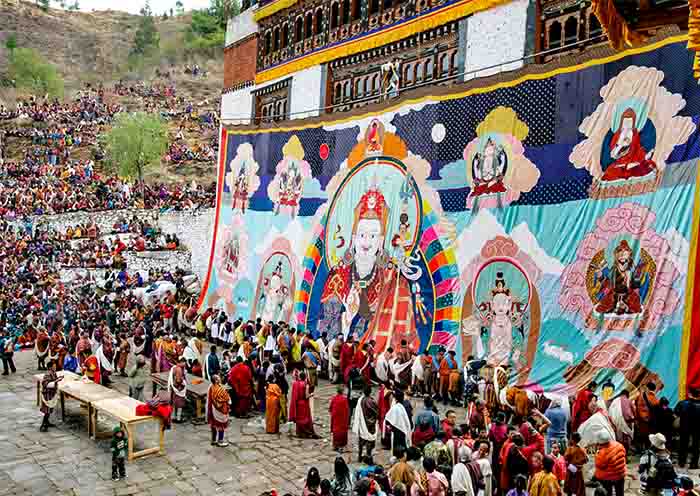

July:
- Average Temperature: 16°C to 25°C (61°F to 77°F)
- Packing Tips: July is still part of the monsoon season, so continue to pack lightweight, quick-drying clothing. Bring rain gear and insect repellent. Consider waterproof footwear for outdoor activities.
August:
- Average Temperature: 16°C to 25°C (61°F to 77°F)
- Packing Tips: Similar to July, August is still in the monsoon season. Pack lightweight, quick-drying clothing, rain gear, and insect repellent. Waterproof footwear is essential for outdoor activities.
September:
- Average Temperature: 15°C to 23°C (59°F to 73°F)
- Packing Tips: September is the transition from the monsoon season to autumn. Pack a mix of light and warm clothing. Layering is recommended for temperature changes. Carry a light jacket or sweater for cooler moments.
October:
- Average Temperature: 11°C to 20°C (52°F to 68°F)
- Packing Tips: October is a pleasant month with mild temperatures. Pack a combination of long-sleeved shirts, t-shirts, and light trousers. It's advisable to carry a light jacket or sweater for cooler mornings and evenings.
November:
- Average Temperature: 6°C to 14°C (43°F to 57°F)
- Packing Tips: November is the beginning of winter. Pack warm clothing like sweaters, jackets, and thermal layers. Include a hat, gloves, and a scarf to stay warm in the chilly temperatures.
December:
- Average Temperature: 3°C to 10°C (37°F to 50°F)
- Packing Tips: December is winter in Paro. Pack warm clothing like sweaters, jackets, and thermal layers. Don't forget to include a hat, gloves, and a scarf to stay warm in the cold temperatures.
It's always a good idea to check the weather forecast before your trip to Paro and adjust your packing accordingly. Layering your clothing will allow you to adapt to temperature changes throughout the day. Additionally, consider packing comfortable walking shoes for outdoor activities and bring sunscreen and sunglasses for protection against the sun.
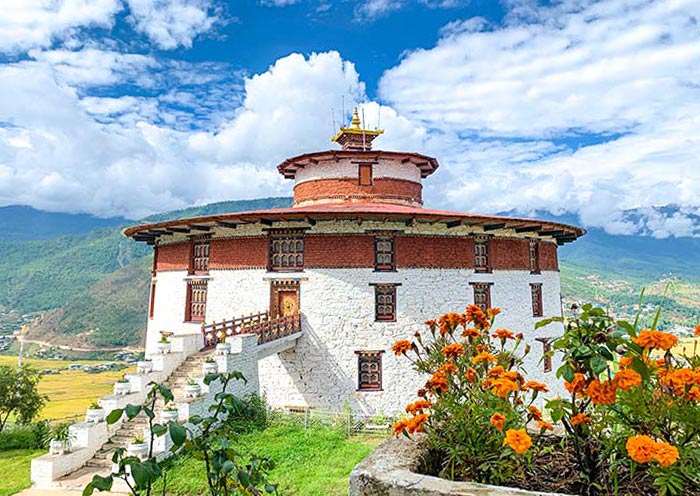
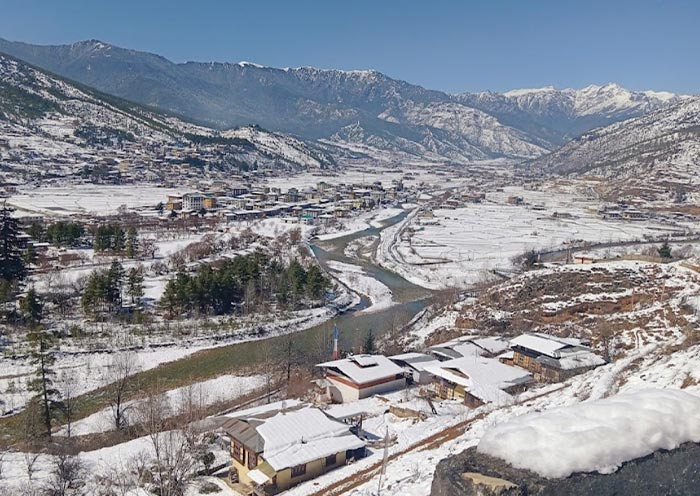
How to Plan Your Bhutan Tour According Bhutan Weather
Crafting your itinerary in Bhutan Private to align with the weather is crucial as each season offers a distinct tapestry of experiences. Here are flexible options for every season, highlighting destinations such as Thimphu, Paro, Punakha, and other exciting locations.
If you are visiting Bhutan in March to May with Bhutan Spring Weather
Allocate 2-3 days in Thimphu: Take in the cultural wonders of Tashichho Dzong and Folk Heritage Museum, and witness vibrant spring Punakha like Tsechu.
Dedicate 2-3 days in Punakha: Weather permitting, take the Tiger's Nest Monastery Hike, explore Punakha Dzong and Chimi Lhakhang, and discover the scenic Phobjikha Valley.
Spare 1-2 days for the Haa Valley: Explore charming villages, witness traditional archery competitions, and enjoy breathtaking mountain views.
Bonus: If you're feeling adventurous, consider a 3-4 day lower-altitude trek, such as the Jomolhari Base Camp trek.
If you are visiting Bhutan in June to August with Bhutan Monsoon Weather
Spend 2-3 days in Thimphu: Immerse yourself in cultural experiences like visiting dzongs and local Festivals, and explore the nearby National Folk Heritage Museum.
Allocate 2-3 days in Paro: Relax in the serene Rinpung Dzong, experience the cultural Farmstay, and visit Kyichu Lhakhang monastery.
Dedicate 2-3 days to the Bumthang Valley: Escape the monsoon rains in this mild valley, discover ancient dzongs like Jakar Dzong and Jambay Lhakhang, and go wildlife spotting in Thrumshingtse National Park.
Bonus: For adventure seekers, consider 1 day whitewater rafting experience on the Mo Chhu River in Punakha if weather permits.


If you are visiting Bhutan in September to November with Bhutan's Autumn Weather
Set aside 3-4 days in Thimphu: Enjoy clear skies and comfortable temperatures, Trek to Tango Monastery for panoramic views, and explore the iconic Buddha Dordenma statue.
Allocate 3-4 days in Paro: Hike the breathtaking Druk Path Trek (weather permitting), visit the National Museum and Paro Dzong, and witness the scenic Tiger's Nest Monastery from the Tiger's Nest viewpoint.
Dedicate 2-3 days to Trongsa: Explore Trongsa Dzong, hike to Yugyel Lhakhang, and delve into local history at Trongsa Museum.
Bonus: For experienced trekkers, consider the challenging 7-14 day Snowman Trek, one of the world's most renowned high-altitude hikes.
If you are visiting Bhutan in December to February with Bhutan's Winter Weather
Spend 2-3 days in Thimphu: Celebrate unique winter festivals like the Thimphu Drukpa Dzong Winter Festival, visit the winter-decorated Tashichho Dzong, and enjoy cozy cafes and local markets.
Allocate 2-3 days in Paro: Witness clear mountain views and snow-capped peaks, immerse yourself in cultural experiences like archery competitions and dzong visits.
Then another 2-3 days to Punakha: Punakha is the place where Bhutan Royals and Monks spend their winter. Enjoy warm, sunny days in the valley, explore Punakha Dzong and Chimi Lhakhang, and experience the winter landscapes.
Bonus: If you're interested in wildlife encounters, consider a 3-4 day trip to Jigme Dorji National Park for birding and although rare, snow leopard spotting!
Note: Always check the latest weather forecast before confirming your itinerary. Certain activities, such as high-altitude treks, may rely on specific weather conditions during each season. Stay prepared for possible road closures and flight cancellations, particularly during the monsoon and winter seasons. Check detailed guide on How to Visit Bhutan.
Travel with AOT, Your Journey to Happiness Starts Here


In Bhutan, where clouds dance with prayer flags and mountains pierce the sapphire sky, your soul finds its melody. Hike through emerald valleys kissed by cool mountain mist, where ancient dzongs whisper secrets of the past. Dance with masked deities beneath a tapestry of stars, their vibrant costumes echoing the hues of spring wildflowers. Here, happiness blooms like rhododendrons on sun-drenched slopes, leaving you forever changed, a symphony of memories forever playing in your heart.
Asia Odyssey Travel has been actively introducing Bhutan to the world, opening up an amazing journey for those who seek a unique trip to Bhutan. With AOT's experienced Bhutan Local Team and our professional travel consultant team, we offer comprehensive services as your travel agency. Moreover, we act as a reliable travel companion on your journey to inner peace and happiness. Plan your lifetime journey with AOT. Contact us now, let's embrace happiness in Bhutan together!
If you have any questions about this article, please contact us by submitting the following form and we'll immediately get back to you.










